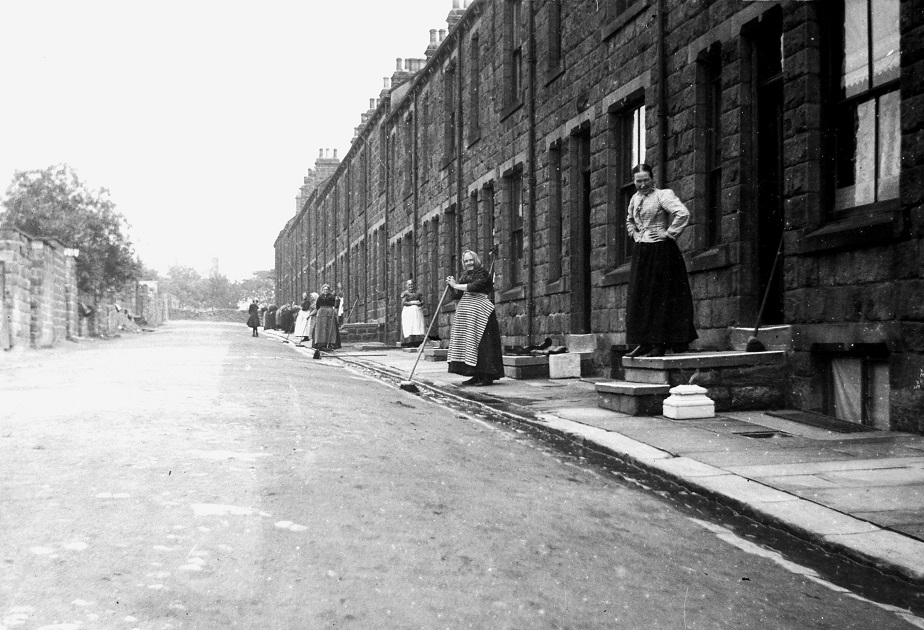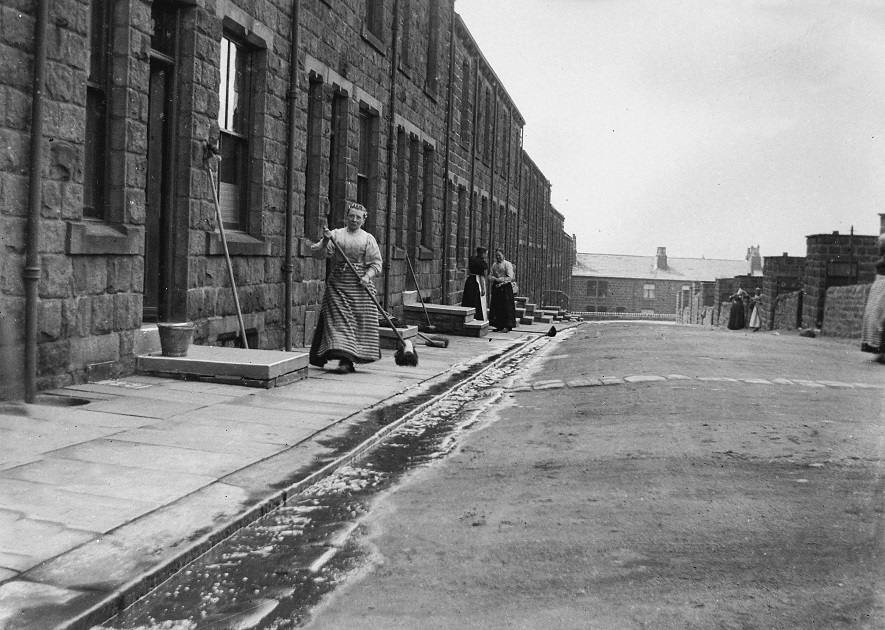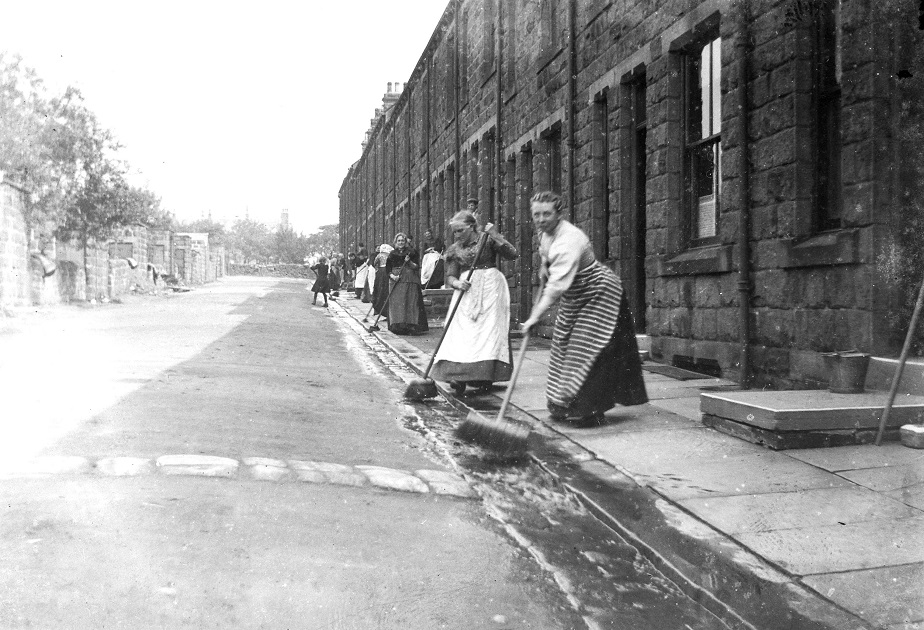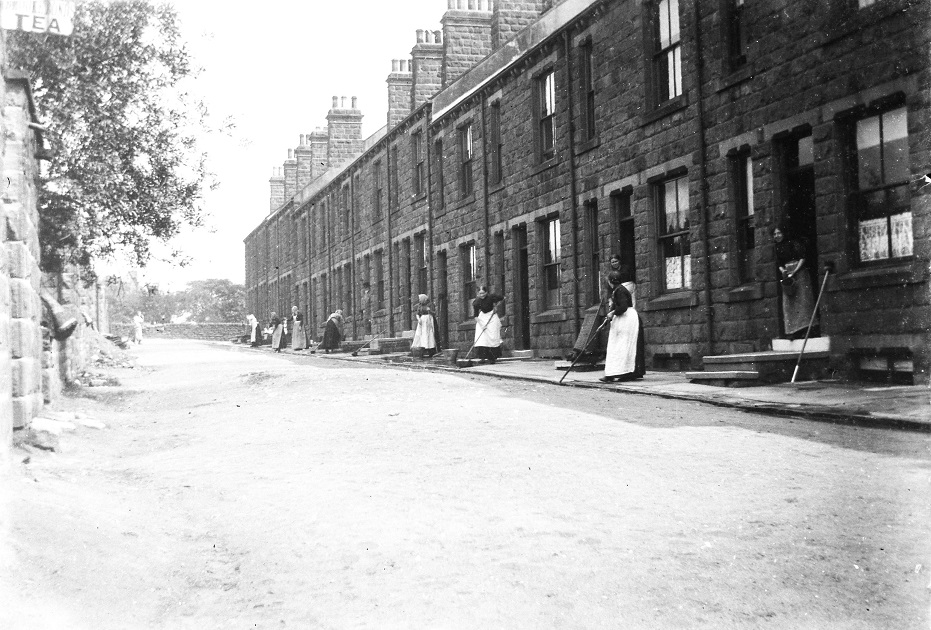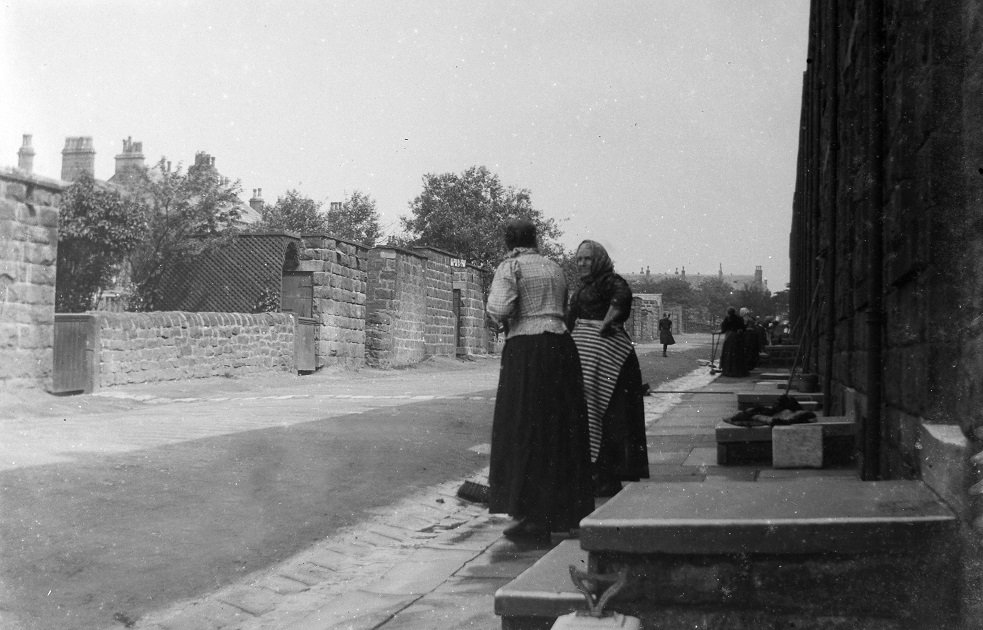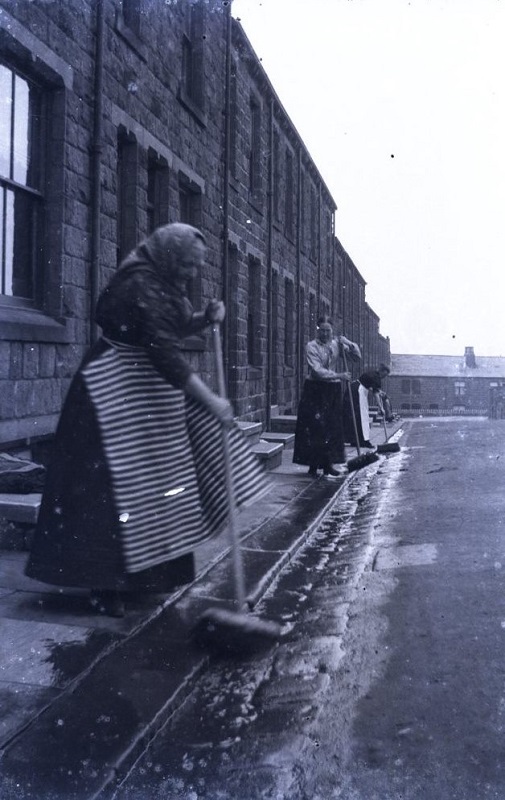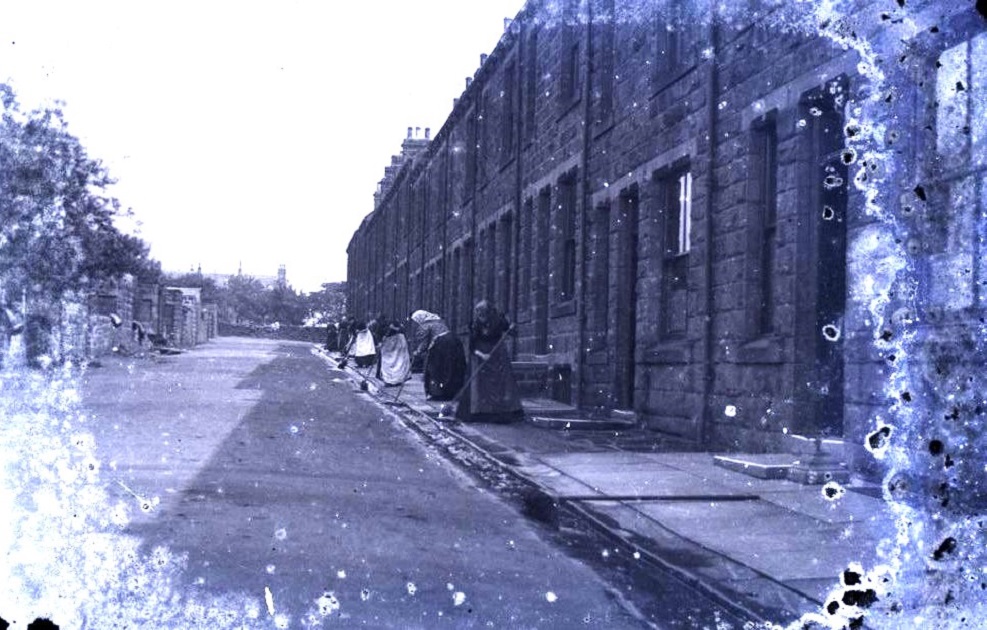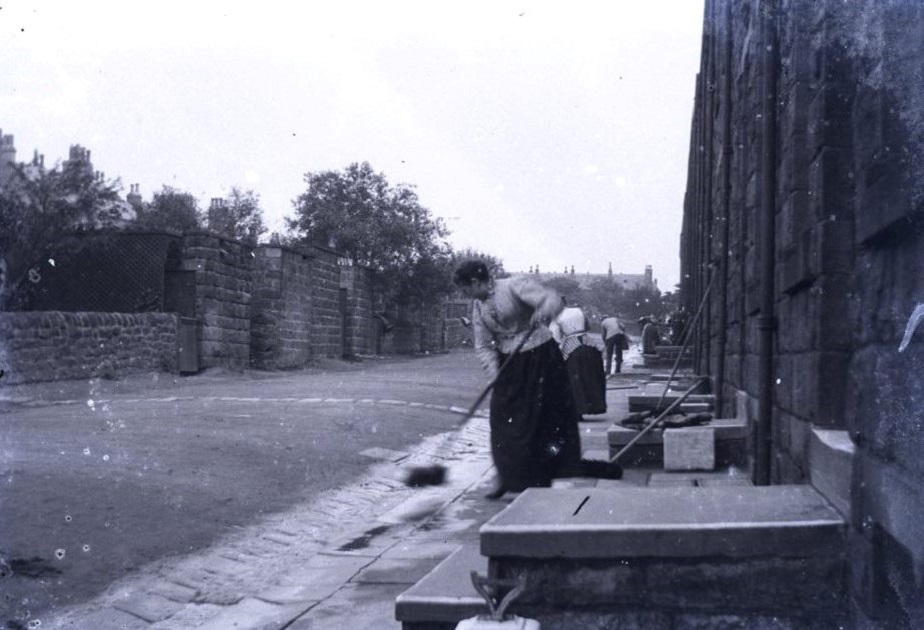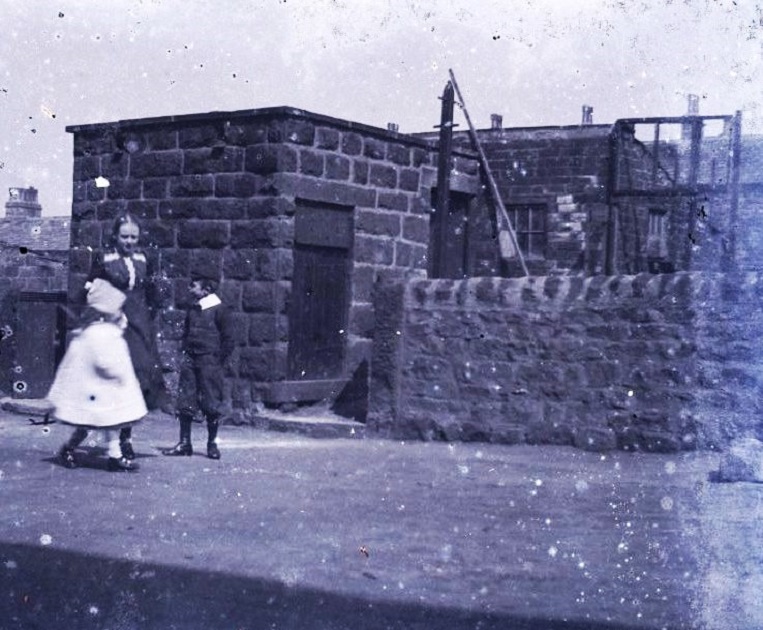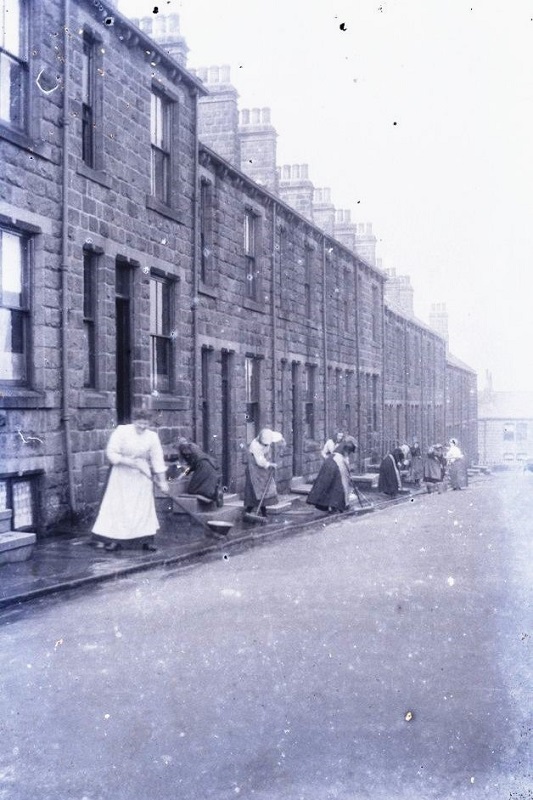| Title | South View Terrace |
| Date | c1900 – c1910 |
| Location | Yeadon |
| Photo ID | SL100 |
| Comment | These photographs were originally taken onto glass slides by Mr. E. E. Slater of Hopeville House, Yeadon. The ladies of South View Terrace are out in force cleaning the steps and pavements in front of their homes. |
South View Terrace – c1900/c1910
Great pride was taken in keeping the exterior window sills, steps and pavements clean. Hard work when surrounded by mill chimneys emitting smoke and fumes into the atmosphere in addition to the dust, soot and smoke from domestic coal fires.
South View Terrace – c1900/c1910
A woman sweeps the road on South View Terrace, the houses in the background are on Football.
Garden areas for the two streets were divided here, in addition the properties on South View Terrace are through houses with gardens to the side facing in the direction of Rufford Avenue/ Rufford Ridge etc.
South View Terrace – c1900/c1910
Residents of South View Terrace busy cleaning the steps, and pavements outside their homes.
After scrubbing, the edges of the steps, pavements and often window sills would be outlined with a “donkey stone” or scouring stone.
The stones were manufactured by mixing ground quarry stone (limestone or sandstone) with water, cement and a bleaching agent, this mixture was set in squares or bars, the colours ranged from brown to cream depending on the colour of the basic stone with additions of other colours used.
South View Terrace – c1900/c1910
After cleaning the exterior steps and pavements (flags) the ladies are sweeping (swilling) the excess water away into the gutter.
On the right a line of scouring or donkey stone can be seen on the edge of the steps.
The woman in the striped apron appears to have curlers in her hair.
South View Terrace – c1900/c1910
Two ladies pause for a gossip, in the right corner the steps have an edging of scouring or donkey stone.
The stone would be dampened and rubbed on the surface of the step to transfer colour from the stone, in later years paint was used instead of the stones as it gave a lasting finish.
The top of a boot scraper is also in view.
Cleaning the exterior of the home was a vital sign that the interior would be pristine. The women of South View Terrace seem to have turned this chore into a communal activity.
South View Terrace – c1900/c1910
Two slides in original condition taken by E E Slater, they show women on South View Terrace working in unison to brush and swill the pavement.
A timeless evocation of life as it was for women in a northern mill town, waging war on soot and pollution from the mills to keep their homes and environment spotlessly clean.
Previous Comments:
teleg
This practice of swilling the flags and donkey stoning the step edges carried on until the second world war
and the people who were lucky enough to go to the seaside for a holiday used to bring back big white pebbles to be used to whiten the step edges. I think the war put a stop to this activity as I don’t remember seeing it done after the war.
11 March 2014.
jean dean
This practice of donkey stoning went on into the mid fifties, we always did it on a Monday with the surplus washing (laundry) water. I guess it discontinued with the introduction of washing machines.
03 July 2019.
Hilary Preston
My mum was still swilling the flags and using a donkey stone up to 1954 on South Parade. When we moved to Hawthorn Road we had no flags to swill. I always thought the donkey stone was a big lump of limestone and not a white beach pebble, but I could be wrong.
05 January 2020.
shirley Bork
I remember when it had snowed and there was a thaw there was a thin black film on the pavements. You could see the tracks of prams and footprints in it. Talk about pollution ! And we were breathing that. At least you never got mildew on the roses.
06 January 2020.
Page 1 of 2 More >>
Consolidated by Jack Brayshaw. 23 July 2021.
Last updated: 06 January 2023 – All images updated.
